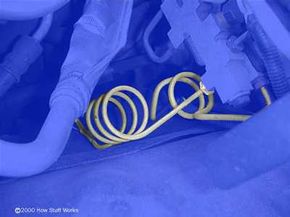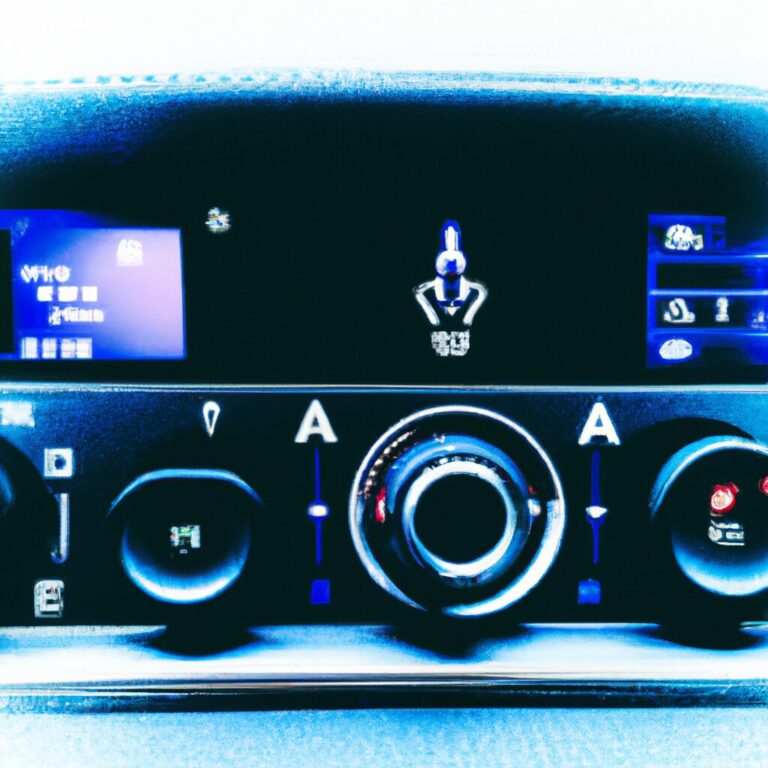Why are Brake Lines Coiled at the Master Cylinder
Brake lines are coiled at the master cylinder to prevent kinking and ensure consistent brake fluid flow. This coiling helps maintain optimal pressure and avoid any obstructions in the brake system.
Ensuring that brake lines are coiled at the master cylinder plays a crucial role in maintaining the efficiency and safety of a vehicle’s braking system. By preventing kinks and ensuring smooth fluid flow, these coiled lines help maintain consistent pressure, which is essential for responsive and reliable braking performance.
We will delve deeper into the reasons behind this design choice, highlighting its importance in ensuring proper functionality and safety on the road. Understanding the significance of coiled brake lines at the master cylinder can provide valuable insights for both automotive enthusiasts and everyday drivers.
Importance Of Brake Lines Coiled At Master Cylinder
When it comes to the braking system of a vehicle, every component plays a crucial role in ensuring safety on the road. One such component is the brake lines, specifically the brake lines coiled at the master cylinder. These coiled brake lines may seem like a minor detail, but their importance should not be overlooked.
Ensuring Even Distribution Of Pressure
The coiling of brake lines at the master cylinder serves an important purpose – it helps in ensuring an even distribution of pressure throughout the braking system. When the brake pedal is pressed, the master cylinder generates hydraulic pressure to actuate the brakes. The coiled brake lines help in distributing this pressure evenly to all the wheels, allowing for consistent and effective braking.
Preventing Pressure Fluctuations
Another reason why brake lines are coiled at the master cylinder is to prevent pressure fluctuations. As the brake pedal is pressed and released, there can be slight variations in the pressure generated by the master cylinder. These pressure fluctuations can negatively affect the performance of the braking system, leading to inconsistent and less responsive brakes.
However, by coiling the brake lines at the master cylinder, the system effectively dampens these pressure fluctuations. The coiled design allows for the absorption and dispersion of any pressure variations, ensuring a stable and reliable braking experience.
Factors Contributing To Coiling
Brake lines are often coiled at the master cylinder due to several factors that impact the hydraulic system’s performance. Let’s delve into the reasons behind this coiling phenomenon.
Hydraulic Fluid Dynamics
Fluid dynamics within the brake system play a vital role in the coiling of brake lines. The coiled design helps maintain proper pressure levels by reducing fluid turbulence, ensuring consistent brake performance.
Master Cylinder Design
The design of the master cylinder also contributes to the necessity of coiled brake lines. Master cylinders with a smaller bore size increase fluid pressure, requiring the coiling of brake lines to regulate this pressure effectively.
Advantages Of Coiled Brake Lines
The Advantages of Coiled Brake Lines:
Enhanced Efficiency
Coiling brake lines at the master cylinder: maintains consistent pressure distribution.
It reduces: the risk of pressure loss and ensures efficient brake response.
Improved Brake Performance
Coiled brake lines: minimize fluid expansion due to heat, enhancing braking accuracy.
They: provide quicker response times and improve overall braking performance.

Credit: auto.howstuffworks.com
Impact On Brake System Maintenance
Coiling brake lines at the master cylinder has a significant impact on the overall maintenance of the brake system. The design of coiled brake lines offers several advantages that can reduce wear and tear while also extending the lifespan of various brake components.
Reduced Wear And Tear
One of the primary benefits of coiling brake lines at the master cylinder is the reduced wear and tear on the brake system. The coiled design helps to absorb vibrations and shock caused by sudden braking, preventing unnecessary strain on the brake lines and other components.
This absorption of shock reduces the chances of brake lines developing cracks, leaks, or damage over time. By minimizing wear and tear, coiled brake lines contribute to maintaining the overall performance and reliability of the brake system.
Extended Lifespan Of Components
The coiled configuration at the master cylinder plays a pivotal role in preserving the lifespan of various brake system components. By providing flexibility and allowing movement, the coiled brake lines prevent excessive stress on components such as the master cylinder, brake calipers, and brake hoses.
This added flexibility ensures that these components do not experience unnecessary strain, leading to a longer lifespan and reduced maintenance requirements. In turn, this can save vehicle owners time, money, and headaches associated with frequent brake system repairs.
Moreover, the extended lifespan of components leads to better overall brake system performance, allowing for safer and more reliable braking.
Considerations For Brake Line Coiling
When it comes to the installation of brake lines, coiling at the master cylinder is a crucial consideration. The coiling of brake lines serves various purposes, from facilitating efficient fluid flow to providing flex and accommodating for thermal expansion. Taking into account several factors is important to ensure that the coiling of brake lines at the master cylinder meets safety and performance requirements.
Temperature Resistance
Brake lines coiled at the master cylinder must exhibit exceptional temperature resistance. Under high braking temperatures, the brake fluid can reach elevated temperatures, potentially causing the brake lines to expand. Coiling the brake lines at the master cylinder helps to compensate for this expansion, preventing excessive pressure buildup. Heat-resistant materials such as stainless steel or coated steel are commonly used in brake line construction, ensuring that the coiled sections can withstand the demanding thermal conditions experienced during braking.
Compatibility With Brake Fluid
Ensuring compatibility with the brake fluid is another critical consideration for brake line coiling. Brake lines must be constructed from materials that are resistant to corrosion and deterioration caused by the brake fluid. Coiling at the master cylinder should not impede the flow of brake fluid or lead to any chemical incompatibility that could compromise the braking system’s effectiveness. It’s crucial to use brake lines made from materials compatible with the specific type of brake fluid used in the vehicle.

Credit: auto.howstuffworks.com
Credit: www.pirate4x4.com
Frequently Asked Questions On Why Are Brake Lines Coiled At The Master Cylinder
Why Do Brake Lines Have Loops At The Master Cylinder?
Brake lines have loops at the master cylinder to compensate for heat expansion and prevent fluid restriction. This design helps maintain consistent brake pressure for smooth and reliable braking.
Do You Need To Coil Brake Lines?
No, you do not need to coil brake lines. Coil brake lines are not necessary for their proper function.
Why Are Brake Lines Bent In A Spiral?
Brake lines are bent in a spiral to allow flexibility and prevent kinks, ensuring smooth fluid flow for optimal braking performance.
Why Do Brake Lines Have Springs On Them?
Brake lines have springs to prevent abrasion, wear, and damage from vibration, ensuring proper braking function and longevity.
Why Are Brake Lines Coiled At The Master Cylinder?
Brake lines are coiled to accommodate flex, absorb shocks, and ease installation.
What Is The Purpose Of Coiling Brake Lines?
Coiling brake lines prevents kinking, optimizes flow, and allows for vehicle movement.
How Do Coiled Brake Lines Improve Performance?
Coiled lines reduce stress, prevent damage, and ensure consistent brake fluid pressure.
Conclusion
The coiling of brake lines at the master cylinder plays a crucial role in ensuring the efficient functionality of the braking system. By creating extra length and flexibility, these coiled brake lines accommodate the movements of the master cylinder and prevent any strain or damage to the brake lines.
This design feature enhances the overall safety and reliability of the braking system, providing a smooth and responsive braking experience for drivers. Understanding this important aspect of brake system design can help vehicle owners appreciate the intricate engineering behind their vehicle’s safety mechanisms.

